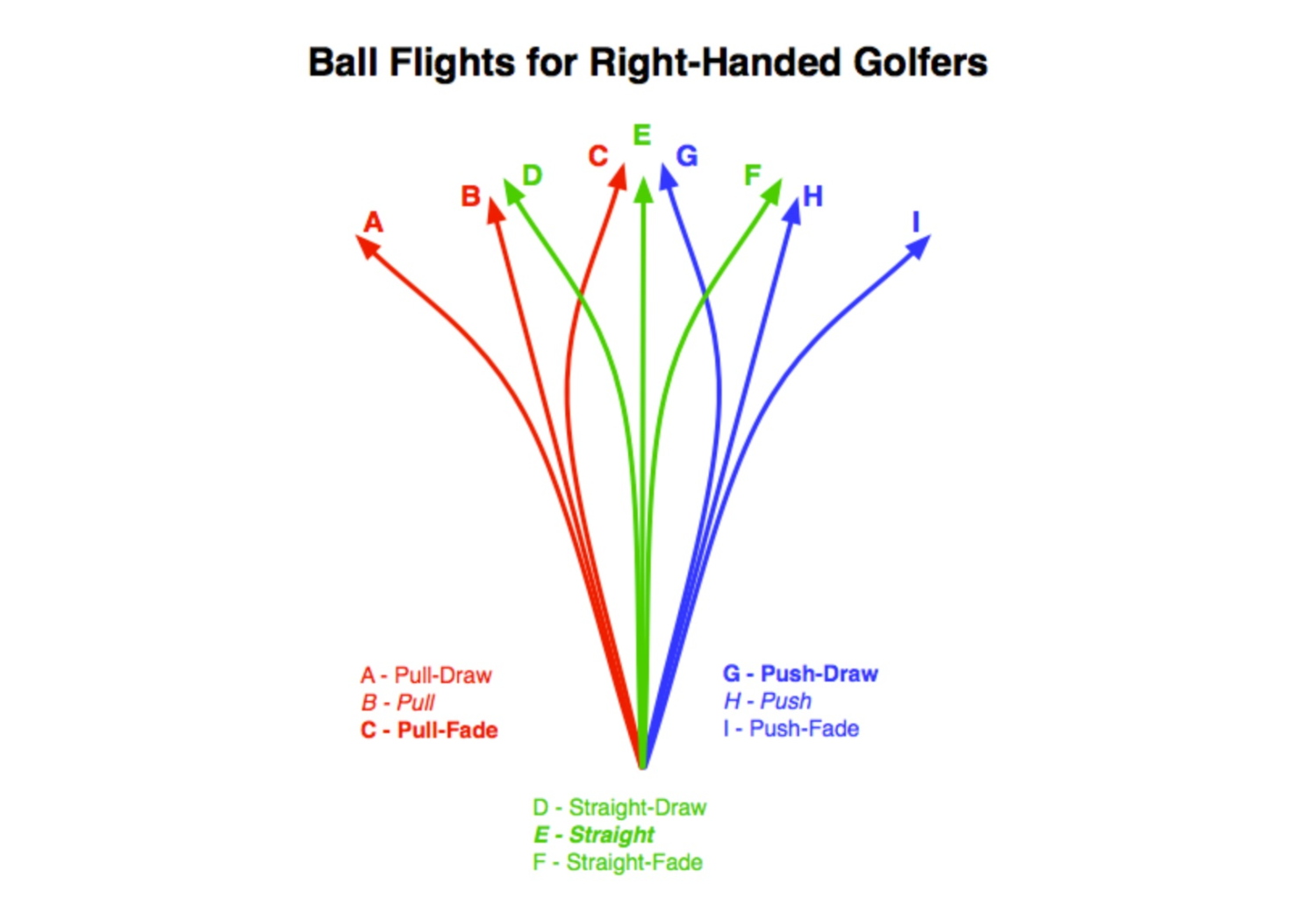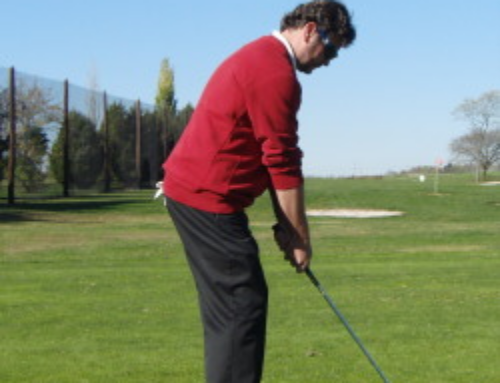One of the first steps a golfer must take to gain an understanding of what they must do to improve their golf swing is to learn the ball flight laws of golf.
The ball flight laws help you understand what causes a ball to start in one direction and then curve or continue in the original direction.
The diagram below shows you how the golf ball will fly based upon the path of the swing and the angle of the clubface at impact.
A study conducted years ago utilizing the Trackman launch monitor indicates that the clubface angle is responsible for 80-85% of the initial direction of the ball.
As you can see, no matter what the club path is, there are three possible directions the ball may travel.
The image below shows the three typical swing paths from a top down view.
This next diagram indicates how the ball will spin based upon swing path.
Note that the clubface is kept square to the target line in the diagram.
In the outside in swing path, a club face that is square to the target line is actually open to the swing path. That will cause a slice spin.
In the inside out swing path, a clubface that is square to the target line will cause hook spin, because it is actually closed to the swing path.
These ball flight laws just deal with the direction of the ball.
The height of the shot depends upon the angle of attack of the golf club.
Most new and bad golfers seem to think that they somehow must lift the ball with the club in order to get the ball in the air.
As a result, the club impacts the ball from an upward angle of attack, when in fact, with most clubs except for the driver, we should be attacking the ball at a downward angle of attack.
The steeper the angle attack, the higher we should be able to hit the ball.
The reason for this is that we want to take advantage of the design of the club itself.
Take the pitching wedge for example.
The typical pitching wedge has about 46 to 47 degrees of loft. There are also a number of grooves cut into the clubface.
The combination of the loft and the grooves will put backspin on the ball. The more backspin on the ball, the higher it will fly!
However, in order to take advantage of the design of this club, it is necessary to be sure that the ball is struck with a descending angle of attack. In other words, it is necessary to hit the ball first, and then the turf.
This allows the ball to roll up the entire clubface, utilizing the loft and grooves. This is what gets the ball airborne.
Unfortunately, most beginners try to help the ball in the air by catching the ball on the upswing.
By attempting to lift the ball in the air, they also move the body improperly during the swing. This will often lead to other swing faults.
With that said, since the driver has so little loft and no grooves, we place it on a tee.
Since the ball is on a tee, we want to catch the ball with an ascending blow to get the ball in the air.
Final thoughts on the ball flight laws
Now that you have an understanding of the ball flight laws, and some information on club design, you should have a better understanding of why you should hold the club a certain way.
You should also understand why your set up is important as well.
Your grip and set up will directly impact your swing, and therefore, your ball flight.
This is why it is really important for any golfer to learn these ball flight laws so that they know why they may need to make certain changes to their grip, set up or swing.
Discover more from Scott Allan Cole
Subscribe to get the latest posts sent to your email.







Leave A Comment